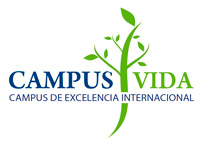Conference: «Chemical Reaction Dynamics: Unimolecular Dissociation at Different Time Scales»

Dr. Riccardo Spezia (Laboratoire Analyse et Modélisation pour la Biologie et l’Environnement, Université d'Evry-Val-d'Essonne - France)
Aula de Seminarios del CIQUS
10:30 am
In this seminar I shall present how chemical dynamics can explain reactivity in gas phase of different systems from relatively small to large biomolecules. First, by coupling chemical dynamics simulations with RRKM theory, it was possible to understand the complex gas phase reactivity of different molecular ions.
As a prototypical example, I will discuss the collision induced dissociation (CID) of complexes formed by Ca2+ or Sr2+ with formamide. There are, as expected, many similarities between the reactivity exhibited by Sr2+ and Ca2+ complexes [1,2]. Some of these similarities and differences could be rationalized by analyzing the topology of the respective potential energy surfaces (PESs) through the use of density functional theory calculations. On the contrary other observations cannot be understood from the PES.
One example is the loss of formamide observed as a dominant process which is not possible to explain in terms of the topology of the PES, and which can arise from non-statistical processes. Hence we have carried out a kinetic analysis of the processes by using a RRKM formalism [3] as well as chemical dynamics simulations of ion-Ar collisions to mimic collision induced dissociation (CID) experiments[4].
In particular from dynamics we were able to: (1) understand the formation of high energy products observed in experiments formed on short time scales (< 2 ps); (2) use the energy transfer distributions obtained in chemical dynamics in the RRKM equations to obtain products on longer time-scales (ns and μs). The combination of both non-statistical and statistical reaction mechanisms at different timescales lead to the full understanding of CID experiments and of the difference between the two systems. This approach will give some theoretical basis to set up a strategy to obtain theoretical tandem mass spectrometry spectra that will be useful to better resolve analytical identification of complex systems, like peptides and carbohydrates.


